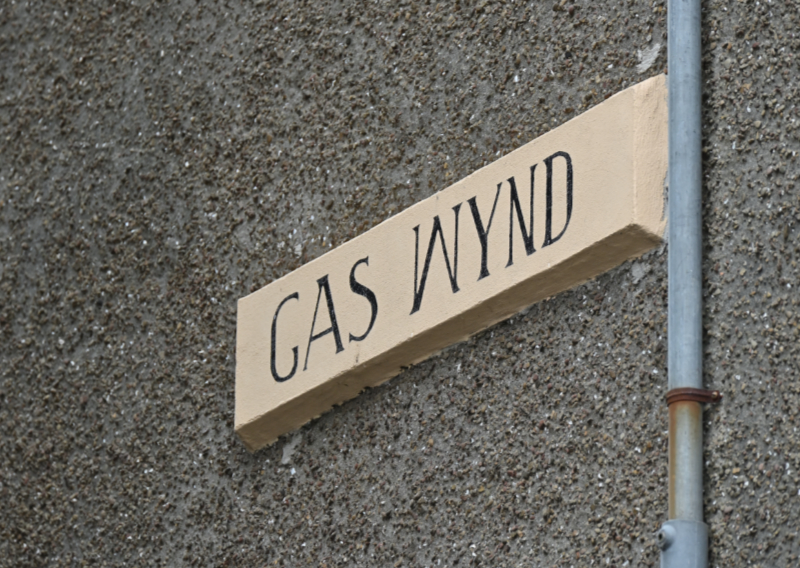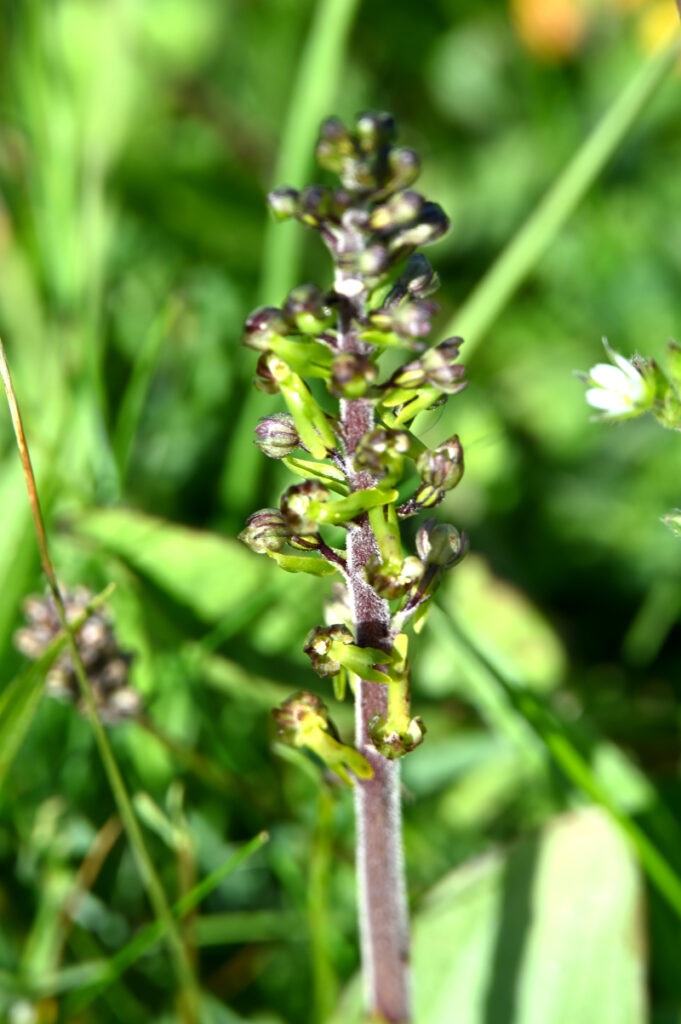We’re not STILL on Orkney – but I am still processing the photos and video taken there. The photos will take months, but the penultimate video is now finished. It’s of our day trip to Papa Westray.




We’re not STILL on Orkney – but I am still processing the photos and video taken there. The photos will take months, but the penultimate video is now finished. It’s of our day trip to Papa Westray.




Thanks to Jim for this one. The winds in Orkney are sometimes described as swappy, meaning they seem to keep changing, or swapping direction as they’re diverted around cliffs, hills and particularly buildings. Maybe that’s why so many street names include ‘wynd’ (pronounced wind) ?
Other common words for road or street, common in Scotland, are Loan and Brae.

I previously blogged about the Northern Marsh Orchid, Heath Spotted Orchid and other purple wild flowers of Orkney. Another wild orchid which grows on Orkney and flowers in early summer is the twayblade. It’s less dramatic than the purple forms, rarer too, but worth searching out.



Other (non purple) wild flowers include yellow flag, meadow vetchling, bog cotton, moon daisies, ragged robin, eyebright, bog strawberry, clover (known as Curly Doddies in Orkney) yellow rattle, buttercups… I even saw a moonwort – OK, not exactly a flower, but I was delighted to see one for the first time.
The click mill, near Dounby, Orkney is a water powered mill, which would have been used to grind beremeal. It gets its name from the sound it made during operation – and although not often activated now, this one still runs if water is diverted into it.
Also, we saw more puffins! Gary took the shots of them flying, as it needs his extra big lens and I can’t move that as fast as a puffin can shift.
By now you might be wondering, ‘Is that woman ever leaving Orkney?’ Well, actually after 5 1/2 weeks we have – but I haven’t finished showing you everything we’ve seen, so there will be just a few more blog posts.
We’d already been inside St Magnus Cathedral, then discovered there are tours to the upper levels. Unfortunately, as only six people can go at once, it’s not easy to book a couple of spaces. We did get one though, and Gary kindly said I could go.
There are five levels to visit, via increasing narrow and scary spiral stairs, through a museum about one transept, up through where the clock mechanism is located, into the belfry and out onto the parapet surrounding the spire. The photos are from the least alarming parts of the tour, as in other places I was holding onto ropes with both hands!
Random facts –
The cathedral was begun in 1137 and in use soon after, although it took a few hundred years to be completed.
There are now several streets of businesses in front of it, but at the time of construction the sea reached almost to the front steps.
From the top you can see the Bishop’s and Earl’s palaces, and at one time there was a castle very close by.
Very rich people could be paid to be buried inside this, and other cathedrals. Not so pleasant for the living who came to services soon after, and possibly the origin of the phrase ‘stinking rich’. When the church was extended the remains of these people were reburied outside. Their gravestones now line the inside walls.
In the churchyard is a grave of someone who died on 30th February – as far as is known, they’re the only person in the UK to have ever died on that date.
The Knap of Howar is the oldest known house in Europe. It’s located on the island of Papa Westray, which we reached by plane from Kirkwall (Mainland Orkney) to Westray and then on to Papa Westray on the world’s shortest scheduled flight. I filmed the entire (less than two minute) journey and got a certificate.
I’ve not mentioned food and drink much. As I don’t want anyone worrying I may be wasting away or dehydrated, I decided to put that right. Orkney has loads of good places to buy food and drink – whether to eat on the premises or take back to cook in your van. There are several supermarkets, plenty of bakeries and tea rooms, four distilleries, a brewery – everything you need.
Orkney specialities include a farmhouse cheese, a little like halloumi, ice cream (I recommend the whisky and marmalade) and bread made with traditional bere wheat. We tried as many as we could, although I generally forgot to photograph them before sinking my teeth in!
We had the bere wheat in the form of a bannock, which is a kind of bread roll. The Empire biscuits aren’t specific to Orkney, but they do seem to only be available in Scotland. Gary likes the ones with a jelly tot best, I prefer the lemon and raspberry.
Gary tried a selection of Orkney beers and a traditional steak pie when our friend took us to lunch in the brewery and I had a burger with haggis (and possibly an Orkney fudge cheesecake). Thanks, Jim – it was delicious.
This is quite a long post with a fair few photos, so you might want to get yourself a drink and snack before you start – I did!
The Ness of Brodgar is a huge neolithic site, near the ring of Brodgar. It’s similar to nearby Skara Brae in some ways, but is believed to be even older and is made from different rock. As some of the photos show, the archeology starts just a few inches below ground, yet amazingly the site was only discovered in 2003 and at the time was thought to be a small tomb! Other photos show how the stone is ‘delaminating’. It’s because of this that the site will be back filled at the end of this year, to preserve it for future generations, despite only a fraction of it having been excavated. That makes this summer the last chance to see it – and perhaps explains the huge crowds of people taking advantage of the opportunity.
These images were taken the first day the site re-opened to the public.
In some images there is clear evidence of subsidence. This we were told was due to ‘shonky’ workmanship. The builders could clearly do good work, but hadn’t bothered with proper foundations – the theory is these may have been temporary structures.
In other pictures you can see nice straight lines and neat corners. That’s just how they found it – nothing has been reconstructed or repaired.
Talking of snacks, evidence of feasting was found at the ness. About 400 cattle legs seemed to have been scoffed at one event. This is a life-sized representation of what those cattle would have looked like. A well nourished writer has been included for scale.

We found the site so interesting, we went back another day, when more had been uncovered. Obviously we took more photos! I’ve included a few details of what may be neolithic art, and some small ‘standing stones’ which were used for other than structural reasons – plus a few more signs which explain eveything better than I can!
In Orkney it never gets fully dark around midsummer. The sun sets below the horizon, and comes up again a few hours later, but it doesn’t sink far enough for total blackness. The resulting, rather beautiful and magical feeling, twilight is known as the Simmer Dim. (Thanks to my lovely friend, appropriately named Dawn, for telling me this.)


Unstan tomb is another of those 5,000 year old structures you have to crawl into if you want a look round – so obviously I did!
You’ll get a better look inside from the short film I made. What do you think of my videos – am I getting any better?